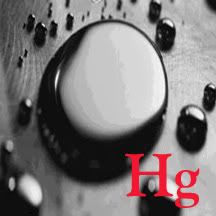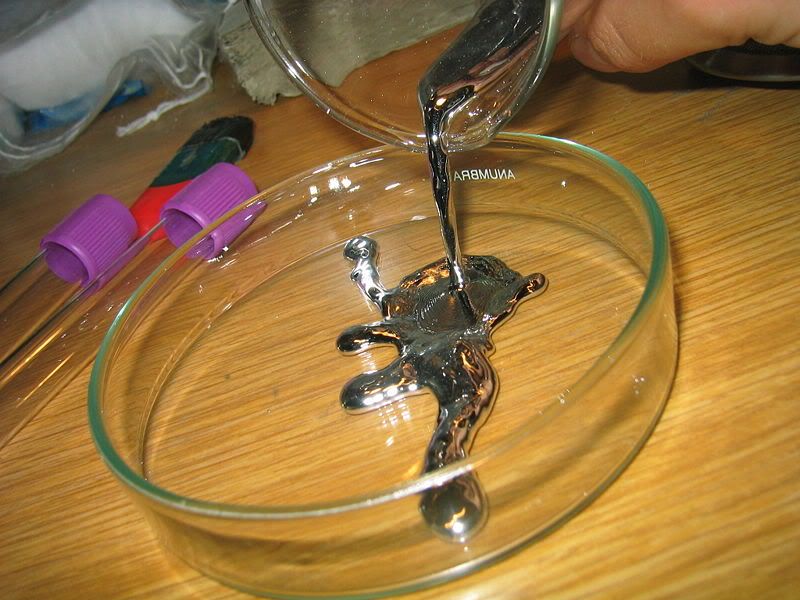Is There Really A Hazard For Broken Thermometer Calls
Executive Summary: If you respond to a call involving spilled elemental Mercury, DO NOT ATTEMPT TO DO ANY CLEANUP. Mercury starts to off gas immediately and the video included at the bottom of this post graphically demonstrates what happens using new technology that allows you to actually see the vapors coming off a small spill onto carpeting. If you mishandle this call, your department could find itself liable for all cleanup costs that can run in the tens of thousands of dollars.
Don't be part of the problem. Be a part of the solution and make sure that a professional bonded remediation company is contacted in conjunction with a certified industrial hygienist to perform air monitoring and sampling for determining levels of contamination. You should act as consultants on situations like this, rather than responders. Just walking into the residence on what may be considered a minor "no big deal" call will contaminate you and your crew. This is a true hazardous materials emergency that must be dealt with. Please share this with others.

Elemental mercury, you know, the cool stuff that makes things shiny, and is the original heavy metal. Not to get too far out there on the fringe here on the FFN, but have you ever had to respond to a reported broken thermometer or deal with spilled mercury? Did you know how much it costs to remediate a house where the unsuspecting resident used a vacuum cleaner to clean up the spilled Mercury? The costs for just a couple of rooms are well over 30K, I couldn't even imagine what a whole house would cost.

Mercury and most of its compounds are extremely toxic and are generally handled with care; in cases of spills involving mercury (such as from certain thermometers or fluorescent light bulbs) specific cleaning procedures are used to avoid toxic exposure.
Mercury can be found in pre-1970 electrical switches as well as blood pressure cuffs and thermometers.

Mercury can be inhaled and absorbed through the skin and mucous membranes, so containers of mercury are securely sealed to avoid spills and evaporation. Heating of mercury, or compounds of mercury that may decompose when heated, is always carried out with adequate ventilation in order to avoid exposure to mercury vapor.
It's hard to always visualize some of this hazmat stuff, so here's a cool video link that shows you graphically how intense the off-gassing of mercury is. I had no idea until recently how volatile Mercury is when spilled. This video demonstrates the effects of a spill with several examples. This is a must for in-house fire department training to educate you on the risks involved with a mercury spill.
http://wbgustream.bgsu.edu/bgsu/epa/index-fl.html
The most toxic forms of mercury are its organic compounds, such as dimethylmercury and methylmercury. Mercury can cause both chronic and acute poisoning and will definitely ruin your day.
TCSS, Mike from Santa Barbara
Don't be part of the problem. Be a part of the solution and make sure that a professional bonded remediation company is contacted in conjunction with a certified industrial hygienist to perform air monitoring and sampling for determining levels of contamination. You should act as consultants on situations like this, rather than responders. Just walking into the residence on what may be considered a minor "no big deal" call will contaminate you and your crew. This is a true hazardous materials emergency that must be dealt with. Please share this with others.

Elemental mercury, you know, the cool stuff that makes things shiny, and is the original heavy metal. Not to get too far out there on the fringe here on the FFN, but have you ever had to respond to a reported broken thermometer or deal with spilled mercury? Did you know how much it costs to remediate a house where the unsuspecting resident used a vacuum cleaner to clean up the spilled Mercury? The costs for just a couple of rooms are well over 30K, I couldn't even imagine what a whole house would cost.

Mercury and most of its compounds are extremely toxic and are generally handled with care; in cases of spills involving mercury (such as from certain thermometers or fluorescent light bulbs) specific cleaning procedures are used to avoid toxic exposure.
Mercury can be found in pre-1970 electrical switches as well as blood pressure cuffs and thermometers.

Mercury can be inhaled and absorbed through the skin and mucous membranes, so containers of mercury are securely sealed to avoid spills and evaporation. Heating of mercury, or compounds of mercury that may decompose when heated, is always carried out with adequate ventilation in order to avoid exposure to mercury vapor.
It's hard to always visualize some of this hazmat stuff, so here's a cool video link that shows you graphically how intense the off-gassing of mercury is. I had no idea until recently how volatile Mercury is when spilled. This video demonstrates the effects of a spill with several examples. This is a must for in-house fire department training to educate you on the risks involved with a mercury spill.
http://wbgustream.bgsu.edu/bgsu/epa/index-fl.html
The most toxic forms of mercury are its organic compounds, such as dimethylmercury and methylmercury. Mercury can cause both chronic and acute poisoning and will definitely ruin your day.
TCSS, Mike from Santa Barbara
Tags:
Replies to This Discussion
-
Permalink Reply by Alex Hummell on June 1, 2009 at 3:39pm
-
Do you guys have a Mercury Vapor Monitor?
-
Permalink Reply by Alex Hummell on June 1, 2009 at 3:45pm
-
We should all have a mercury vapor monitor to take with us on call!!!! here is a link to a company that sells them. I also attached the portable mercury vapor monitor brochure.
www.mercury-instrumentsUSA.com - Attachments:
-
Permalink Reply by Dennis Brown on June 2, 2009 at 10:47am
-
LOL Thanks for the info on the mercury
-
Permalink Reply by Todd on June 4, 2009 at 5:57pm
-
Thermometers and b.p. cuffs actually contain ELEMENTAL MERCURYattached below are the health effects.
Elemental mercury exposure
When elemental mercury is spilled or a device containing mercury breaks, the exposed elemental mercury can evaporate and become an invisible, odorless toxic vapor. This is especially true in warm or poorly-ventilated rooms or spaces. Sources of potential exposure to elemental mercury are described below.
*
Elemental or metallic mercury is the liquid metal used in thermometers, barometers, and thermostats and other electrical switches. Metallic mercury is often found in school laboratories as well as in thermometers, barometers, switches, thermostats, and other devices found in school science labs.
*
It is not uncommon for children to break fever thermometers in their mouths. Mercury that is swallowed in such cases poses low risk comparison to the risk of breathing mercury vapor.
*
There are some necklaces imported from Mexico that contain a glass pendant that contains mercury. The mercury-containing pendants can come in various shapes such as hearts, bottles, balls, saber teeth, and chili peppers. If broken, they release metallic mercury to the environment.
Dental amalgam - Mercury is used in dentistry in dental amalgam. Dental amalgam is a direct filling material used in restoring teeth. It is made up of approximately 40-50% mercury, 25% silver and 25-35% a mixture of copper, zinc and tin. Amalgam use is declining because the incidence of dental decay is decreasing and because improved substitute materials are now available for certain applications.
Dental amalgams are considered medical devices and are regulated by U.S. Food and Drug Administration (FDA). Since the 1990s, FDA, the Centers for Disease Control and Prevention (CDC) and other government agencies have reviewed the scientific literature looking for links between dental amalgams and health problems. CDC reported in 2001 that there is little evidence that the health of the vast majority of people with dental amalgam is compromised, nor that removing amalgam fillings has a beneficial effect on health. In 2002, FDA published a proposed rule to classify dental amalgam as a class II medical device with special controls. On April 28, 2008, FDA reopened the comment period for that proposed rule. After reviewing all comments, FDA intends to issue a final rule classifying dental amalgam.
Elemental mercury effects
Elemental (metallic) mercury primarily causes health effects when it is breathed as a vapor where it can be absorbed through the lungs. These exposures can occur when elemental mercury is spilled or products that contain elemental mercury break and expose mercury to the air, particularly in warm or poorly-ventilated indoor spaces. The first paragraph on this page lists the factors that determine the severity of the health effects from exposure to mercury. Symptoms include these: tremors; emotional changes (e.g., mood swings, irritability, nervousness, excessive shyness); insomnia; neuromuscular changes (such as weakness, muscle atrophy, twitching); headaches; disturbances in sensations; changes in nerve responses; performance deficits on tests of cognitive function. At higher exposures there may be kidney effects, respiratory failure and death. People concerned about their exposure to elemental mercury should consult their physician.
Also how many house fires do we respond to that we monitor the air for carbon monoxide, etc. and with in acceptable limits our firefighters doing salvage work are allowed to remove there respiratory protection. What if there were thermometers in the rubble that were broken unknowingly by firefighters?
- ‹ Previous
- 1
- 2
- 3
- Next ›
Specialty Websites
Find Members Fast
Firefighting Videos
© 2025 Created by Firefighter Nation WebChief.
Powered by
![]()
Badges | Contact Firefighter Nation | Privacy Policy | Terms of Service